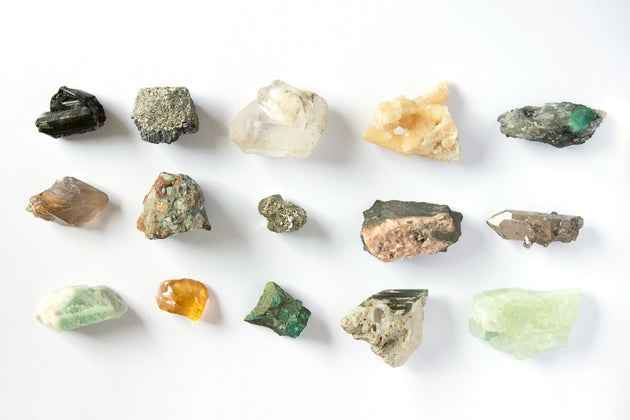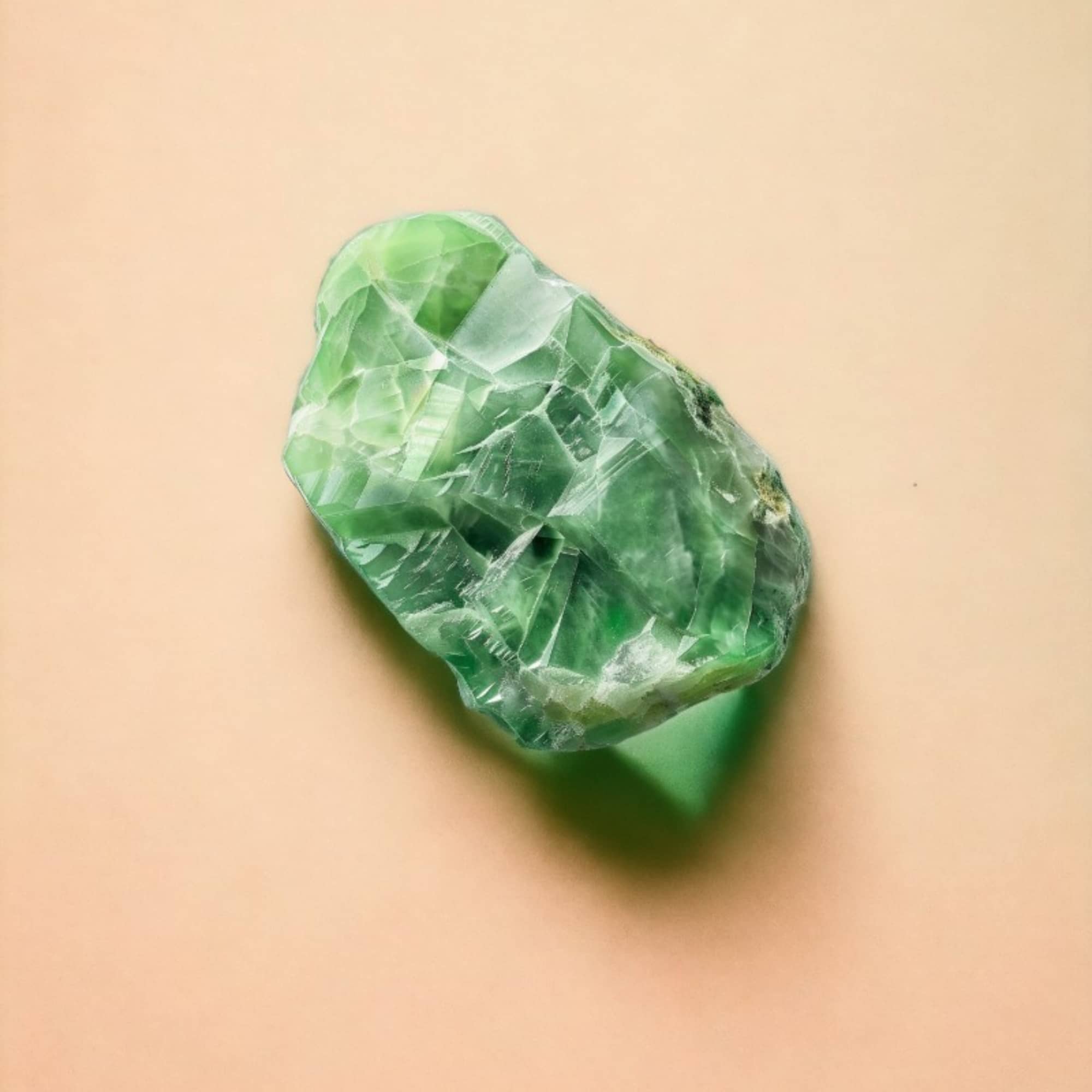History & Origins
Antiquity
Chalcedony takes its name from the ancient city of Chalcedon, located in what is today the Asian part of Istanbul, Turkey. Ancient civilizations, including the Greeks, Romans and Egyptians, widely used chalcedony to create seals, amulets, jewelry and various objets d'art, appreciating its beauty and ease of carving.
The Middle Ages
In the Middle Ages, chalcedony continued to be a popular choice for gems and religious objects. It was often associated with the benefits of calm and comfort, and was thought to help soothe tumultuous emotions, promoting inner peace and serenity.
Renaissance and later periods
During the Renaissance, chalcedony gained popularity among the upper classes and nobility in Europe, used in the manufacture of refined cameos and intaglios. Its appeal has only grown over time, with periods of revival, particularly during the Victorian era, when it was incorporated into sumptuous jewelry and decorative objects.
Spiritual and cultural meaning
In many cultures, chalcedony is considered a stone of communication and goodwill. It is believed to facilitate verbal expression and understanding, improving interpersonal relationships. Chalcedony is also linked to emotional stability, offering support and consolation in times of stress.
Throughout history, chalcedony has been valued not only for its outward beauty but also for its perceived inner qualities, playing a role in various rites, beliefs and artistic practices. Its constant presence and evolution in human traditions testify to its enduring importance and ability to touch hearts and minds throughout the ages. Today, chalcedony continues to be a sought-after gemstone, enriching people's lives with its gentle, soothing energy.

Provenance
Chalcedony, with its vast range of varieties and colors, is found in many parts of the world, each bringing its own unique beauty to this fascinating mineral. The diversity of chalcedony deposits reflects the richness and complexity of this stone, much sought-after for its versatility and natural beauty.
Main deposits
Brazil
Brazil is one of the main sources of chalcedony, offering a wide variety of colors, including blue, pink and green. Brazilian specimens are often used in fine jewelry and decorative art objects.
Uruguay and Argentina
These neighboring countries are renowned for their agate and blue chalcedony, often found together in geodes. The quality and beauty of specimens from Uruguay and Argentina make them popular choices for collectors and designers alike.
India
India produces a variety of chalcedonies, including the green chalcedony known as "chrysoprase" and blue chalcedony. Indian deposits are prized for their exceptional quality and vivid colors.
Madagascar
Known for its wealth of gemstones, Madagascar also offers magnificent specimens of chalcedony, including pastel-colored varieties.
United States
The United States, particularly Oregon, Arizona and California, are home to chalcedony deposits, some of which produce the unique blue-gray "Oregon chalcedony".
Influence of Provenance on Properties
Chalcedony's provenance can influence its physical and aesthetic properties, such as color, transparency and the presence of inclusions or patterns. For example, blue chalcedony from Namibia is often highly translucent and uniform in color, while chalcedony from Uruguay may have complex bands or patterns.
Origin plays an important role in the diversity of chalcedonies available on the market. Each deposit makes its own unique contribution to the global collection of this stone, enriching our appreciation of chalcedony and offering a vast palette for designers, collectors and lithotherapy practitioners alike. The abundance and variety of chalcedony sources ensure that this stone will continue to captivate and inspire for generations to come.
Features
Chalcedony, a microcrystalline variety of quartz, is distinguished by a series of unique characteristics that make it particularly prized in the world of gems and lithotherapy. Its varied physical and aesthetic attributes give it a versatility and beauty that appeal to a wide range of amateurs and professionals alike.
Translucency and color
One of chalcedony's most alluring characteristics is its translucency. It can vary from opaque to almost transparent, offering a visual softness and depth of color that can be mesmerizing. Chalcedony's color palette is extremely varied, ranging from the pale blue of chalcedony to the bright red and orange of carnelian, the green of chrysoprase and the deep black of onyx.
Hardness
With a hardness of 6 to 7 on the Mohs scale, chalcedony is sufficiently resistant to be used in a variety of applications, including jewelry. This hardness enables it to retain its polish and resist scratches and scuffs to a certain extent.
Crystal structure
Chalcedony's crystalline structure is made up of quartz crystals so fine they are invisible to the naked eye, giving it a unique creamy texture that is very different from that of more common transparent quartz. This structure also contributes to its slightly vitreous appearance and characteristic waxy luster.
Varieties
Chalcedony encompasses a wide range of varieties, each with its own distinctive colors and patterns. Among the best-known varieties are agate (characterized by bands of color), carnelian (red to orange), onyx (black and white bands), sardony (orange-brown), and chrysoprase (apple-green).
Chalcedony, with its diversity of shapes, colors and properties, is a fascinating stone that continues to attract attention for its use in jewelry, decoration and spiritual practices. Its visual softness and subtle nuances make chalcedony a preferred choice for those seeking to incorporate natural beauty and serenity into their daily lives.
Benefits & Properties
Beyond its delicate beauty and variety of colors, chalcedony is also renowned for its many benefits and metaphysical properties. Each variety of chalcedony brings its own specific energies, but they all share certain common characteristics that make them a valuable stone in wellness and spiritual healing practices.
Emotional soothing
Chalcedony is particularly valued for its ability to soothe and stabilize emotional states. It is considered a stone of communication that encourages openness and the expression of feelings, helping to dissipate tensions and reduce interpersonal conflicts. Its presence is said to create an atmosphere of calm and serenity, enabling better listening and mutual understanding.
Strengthening communication
Linked to the throat, chalcedony encourages verbal expression and self-confidence when it comes to communicating thoughts and ideas. It is often recommended for people who find it difficult to verbalize their feelings or who experience communication blocks. Chalcedony helps you find the right words and speak with clarity and sincerity.
Chakra harmonization
Depending on its color, chalcedony can be used to harmonize and balance different chakras. For example, blue chalcedony is associated with the throat chakra, promoting fluid communication, while pink chalcedony can be linked to the heart chakra, encouraging love and compassion.
Healing properties
On a physical level, chalcedony is said to provide support in the treatment of throat-related disorders, such as inflammation or hoarseness. It is also renowned for its beneficial effect on regulating body fluids and lowering blood pressure, thus contributing to an improved general state of health.
Support for meditation and reflection
Chalcedony's gentle energy makes it an ideal stone for meditation and deep reflection. It helps to calm the mind, reduce stress and reach higher states of consciousness. Chalcedony encourages introspection and self-examination, paving the way for personal and spiritual growth.
Chalcedony, with its soothing benefits and properties promoting communication and harmony, is a valuable healing and support stone. Whether used alone or in combination with other crystals, chalcedony offers a wide range of possibilities for enhancing emotional, physical and spiritual well-being, making daily life more balanced and peaceful.
Care
Caring for chalcedony and ensuring it is regularly recharged is essential to maintaining not only its physical beauty but also its metaphysical properties. Here are a few tips on caring for and recharging this soft, soothing stone.
Chalcedony care
Clean your chalcedony with lukewarm water and mild soap, rubbing gently with a soft cloth or soft bristle brush to remove dirt and energetic residues. Chalcedony can absorb negative energies, so it's important to clean it regularly. After cleaning, be sure to rinse the chalcedony well with clear water and dry it thoroughly with a soft cloth to avoid any moisture build-up, which could affect its structure.
Store your chalcedony in a dry place, away from direct sunlight and extreme temperatures. If you keep it with other stones, consider using a cloth bag or separate box to avoid scratches.
Chalcedony refill
Lunar Light
The best way to recharge chalcedony is to place it in moonlight, especially during a full moon. Moonlight is gentle and will help restore the stone's energy without discoloring or damaging its surface.
Earth
Burying your chalcedony in the ground overnight can also help recharge it. Contact with the earth helps cleanse accumulated negative energies and recharges the stone with positive, stable energies.
Crystalline clusters
Placing chalcedony on a quartz cluster or geode can also help purify and recharge it. Quartz is known for its cleansing and energy-amplifying properties, making it an excellent companion for recharging other crystals.
Precautions for use
Although solar recharging can be beneficial for some stones, prolonged exposure to the sun can alter the color of chalcedony, especially the lighter-colored varieties. Chalcedony can also crack or break if mistreated. Handle it with care to preserve its beauty and integrity.
By caring for your chalcedony through regular cleaning and recharging, you ensure not only the preservation of its aesthetic qualities but also the maintenance of its beneficial energetic properties.
Chalcedony, with its subtle nuances and gentle energy, is much more than just a decorative stone. It symbolizes communication and harmony, offering emotional and spiritual support to those around it. Caring for and recharging chalcedony not only preserves its natural beauty, but also enhances its soothing and healing properties. By integrating chalcedony into your life, you invite greater openness of heart, improved communication and emotional well-being. This versatile stone continues to inspire and enrich, reminding us of the importance of gentleness, clarity and connection in our quest for balance and harmony.



